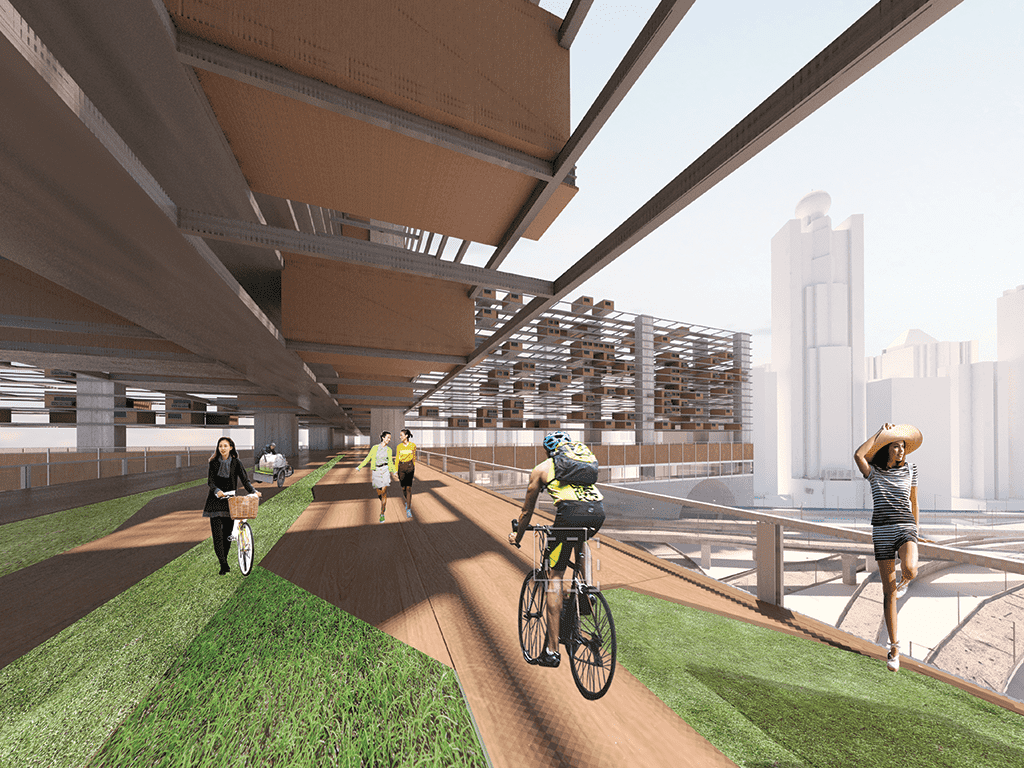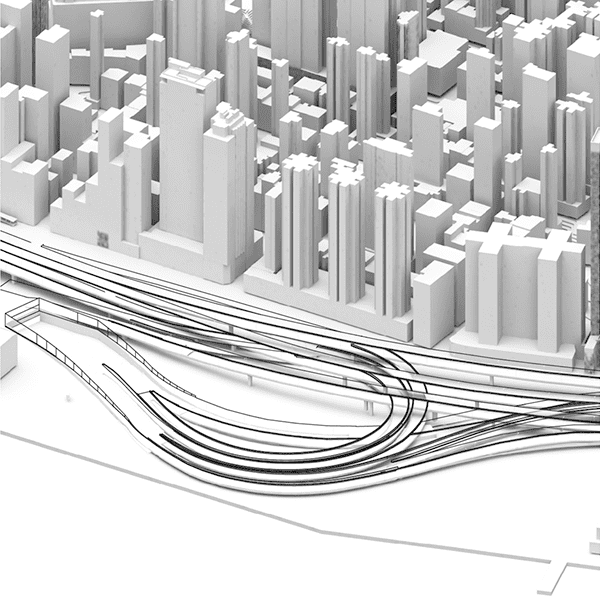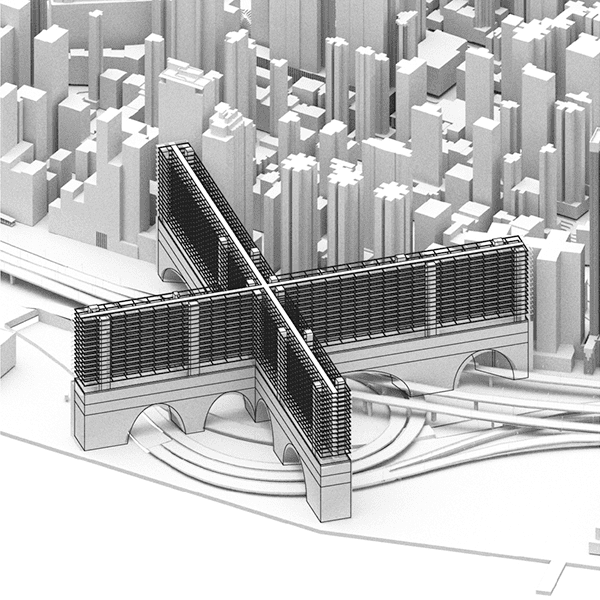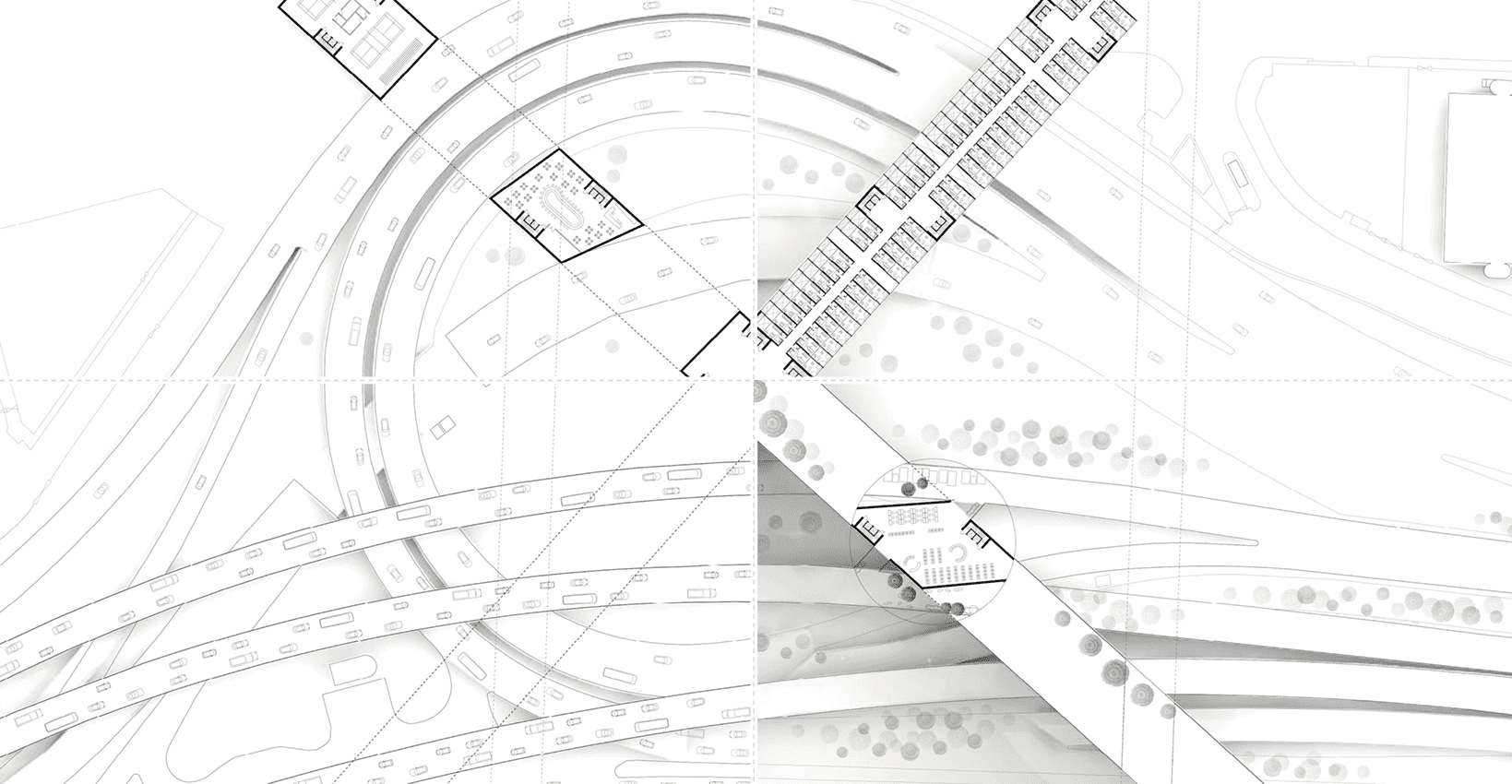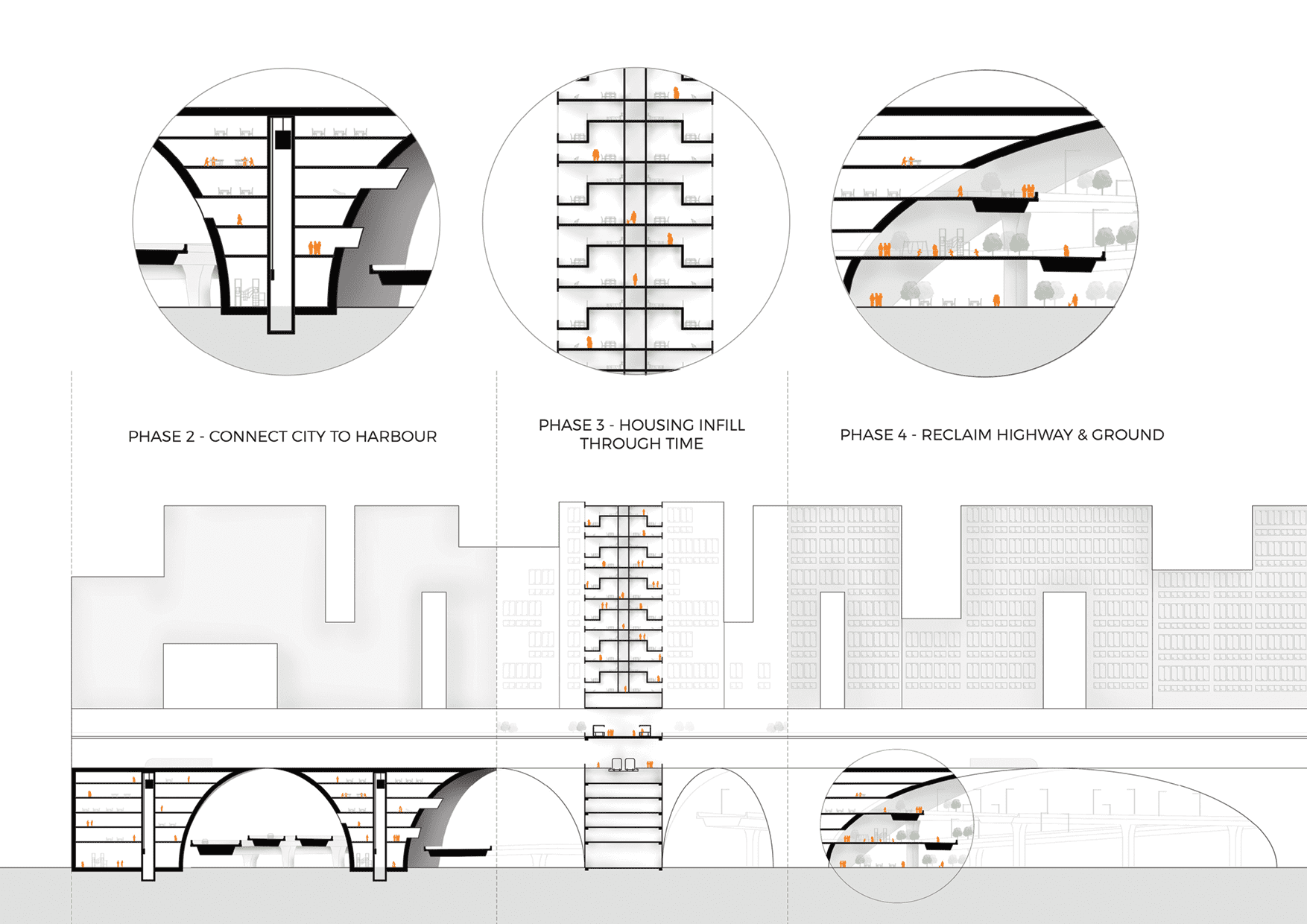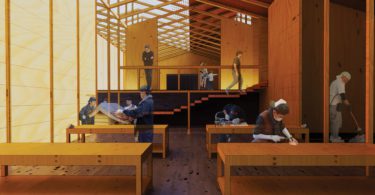Hong Kong is increasingly in danger of becoming a Generic City. Like many other metropolises, it has multiple freeways connecting different districts. These freeways, occupying more and more land in cities, serve only utility and infrastructure functions. They do not express any local characteristics and are formulated only for maximum efficiency – leaving no space for producing any local quality. These freeways, elevated or on-ground, cut the city into isolated islands, giving nothing back but inter-district linkage, but neglecting connectivity within the districts themselves. The area occupied by these freeways, or that isolated by them, become ‘nonplaces’, as theorised by Marc Auge.
In the ‘Habitat Interchange’ project, students at the University of Hong Kong studied the multilayered city theory of Aldo Rossi, and investigated the possibility of placing a layer on top of these non-places, and using it for residential, commercial, and community use. They identified and studied around twenty sites, in which most were either round radii, or intersections of straight roads. They then designed a prototypal strategy of a modular system, in which arches span over the freeways, supported by negative space on the ground, the freeways being intervened with cross-prototypes and ring-prototypes.
A site in Sai Ying Pun was chosen for further investigation and in-depth design. The freeways here are of the round-radii type. Diagrams show the possibilities of development after the cross-prototypes have intervened the freeway. Currently, the district of Sai Ying Pun is split into two parts, as the existing freeway imposes a hard boundary between the harbour and the city – while land close to the harbour should be of high value, it has been isolated by the proximity of a ‘non-place’. Furthermore, the only connection to the actual waterfront is through a single footbridge. The students’ design, then, attempts to activate the ‘non-place’ within the circular infrastructure and surrounding area to reprogram and revive the area, reconnecting the district. Further designs made show housing units infilled into the structure, a possible solution to the housing shortages in Hong Kong, as well as shopping and recreational spaces for existing and future residents.
PROJECT DATA
Student Name: Bosco Ho Jun Yin, Yoyo Chan Lok Yiu, Anthony Lee Ka, Karen Lee Ka Ying
School: University of Hong Kong
Programme: Masters of Architecture I – ‘Urban Mobility and Smart Infrastructures’
Instructors: Sunnie S.Y. Lau
Project Name: Habitat Interchange
Location: Sai Ying Pun, Hong Kong
Site Area: 160,000 square metres
Gross Floor Area: 160,000 square metres
Images: University of Hong Kong



